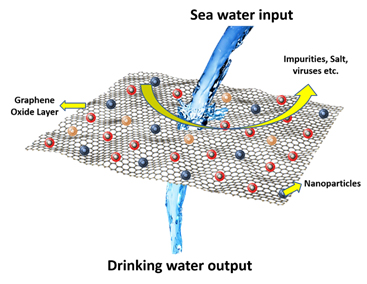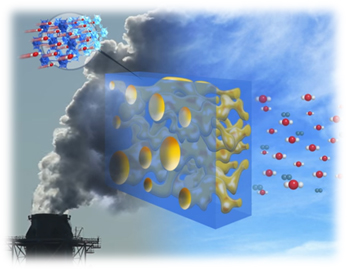Addressing Environmental And Societal Issues Using Nanotechnology
By Kingsley Amakiri

Among the plethora of social problems that impact people all over the globe, some are very easy to solve while others may take millennia to resolve completely. Social concerns are developing and evolving constantly, and novel challenges are frequently thrust to the fore. Many social concerns are thought to be addressable only via political engagement and systemic reforms; nevertheless, there are other elements of social concerns that can be assisted through the application of scientific principles. Despite some limitations, the ideas and materials tied to nanotechnology might be used as a tool in addressing these societal concerns. Thus, nanotechnology-based systems —for example, advanced oxidation processes (AOPs) and membranes — can provide an affordable option for underdeveloped nations that lack adequate water and wastewater treatment facilities [1].
Clean Water Accessibility And Treatment Using Nanotechnology
In many countries, the lack of adequate sanitation and water treatment facilities is a key source of worry when it comes to the accessibility of clean water. Thus, the global demand for a highly-effective water treatment medium is evident — and graphene may just hold the answer. Recently, a growing number of graphene-based filters have emerged from both academic laboratories and the industrial sector, indicating that the technology is being more widely used. Graphene-based materials and their composites possess promising applications in water treatments across the world to meet the water demands [2]. Graphene-based materials filter can create clean drinking water, regardless of how dirty it is, in a single step (see Figure 1). The adsorption capacity of these materials is higher than traditional materials such as activated carbon. Graphene possesses ultrathin thickness for maintaining high flux efficiency, high mechanical strength to withstand high pressures, and high chemical and thermal stability. Due to the simplicity of graphene-based filters, they may be quickly transported to locations where water treatment is most needed, such as remote areas where only polluted water is available.

Figure 1.
Graphene-based filtration, with holes so small that salt molecules cannot pass through, has demonstrated high salt-rejection rates [3] with the capacity to remove various contaminants and with anti-fouling capability. There has also been a great deal of investigation into the process of desalinating saltwater into potable water, once again employing graphene-based materials. While this treatment process may not be as applicable in places where clean water is scarce, in coastal locations where there is a lot of saltwater, this might be a viable alternative for providing clean drinking water.
Combating Climate Change
Although they may seem like two very different problems, climate change and air pollution are closely linked and are undoubtedly two of the most significant worldwide concerns confronting the contemporary world. There has been a lot of advancement in the use of nano-inspired products. These products have different qualities depending on what they're made of, but some can take carbon dioxide from the air and release oxygen, while others can thermally regulate a building's walls, resulting in less energy being utilized.
Whilst reducing climate change is a huge task, there are certain ways in which nanotechnology might assist. Carbon capture and storage, as well as renewable energy sources, are the two most promising areas. Nanomaterials are being used as the membrane material in carbon capture operations because they are tiny enough to trap gaseous molecules and because their properties can be modified to specifically collect carbon-based gases, thereby enabling the passage of other gaseous molecules (Figure 2).

Figure 2.
In terms of renewable energy, nanomaterials have found the greatest use in photovoltaic (solar) cells, so nanotechnology has the potential to be highly effective in the extraction of solar energy. Using this strategy, the system's performance in the areas of power and heat generation may be increased.
Nanomaterials are becoming more popular because the electron production and transfer processes are becoming more efficient, which in turn is assisting in the development of more efficient solar cells. Long-term, the efficiency of renewable energy sources will increase, making the phase out of fossil fuels more possible — something that will aid in the reduction of pollution and the reversal or mitigation of climate change.
References
- Hlongwane, G.N., et al., Simultaneous removal of pollutants from water using nanoparticles: A shift from single pollutant control to multiple pollutant control. Science of The Total Environment, 2019. 656: p. 808-833.
- Mohan, V.B., et al., Graphene-based materials and their composites: A review on production, applications and product limitations. Composites Part B: Engineering, 2018. 142: p. 200-220.
- Bird, J. Graphene filters change the economics of clean water. 2018; Available from: https://www.ft.com/content/d768030e-d8ec-11e7-9504-59efdb70e12f.

Kingsley Amakiri is a Researcher at the University of Huddersfield, Department of Chemical Engineering. He can be reached at Kingsley.amakiri@hud.ac.uk.
